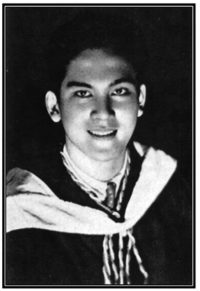When, the historians get around to studying the question whether this war was premeditated by Japan, they will be puzzled by the fact that Japan apparently started to prepare for it only when it was already lost. Yesterday the 12th January 1945, with the Americans- in the Marianas and the Philippines, the Japanese government announced the following five-point program for “immediate enforcement”:
1. Increased air defence
2. Increased munitions production
3. Increased food production
4. All-out mobilization
5. “Thorough turning of materials into fighting power”
The only policy — and it was only a corollary — that might not just as well have been formulated in 1941 was one to achieve regional self-sufficiency in Japan. The main islands have been divided into regions corresponding with military defense areas and from now on “defense and production will be managed inseparably from each other” within each region as far as possible.
All in all Japanese policy seems to be paralyzed. The Yomiuri today could think up nothing better than to compare the battle of Luzon to one of the numerous history-textbook clashes between Japan’s medieval warlords and to quote a poem of General Nogi, the conqueror of Port Arthur:
Why do we pray for luck in battle?
Impetuosity is the quality proper to warriors.
Fortune will smile upon us more when we are impetuous.
May the eight million wargods give us their divine protection.
It is all scarcely less unreal than the show we went to in the evening at a neighborhood theater, one of the few still open.
We went to see a southern seas revue which one of the Filipinos in Tokyo helped to direct. We purposely missed the first part of the program, a propaganda effort which, judging from the tail-end we caught, was very German-modern. The final tableau showed the deck of a battleship off Leyte; five sailors recited heroic verses to the responses of a chorus of chaste mermaids while later a fiery spirit or god, perched on the mainmast, exhorted them to victory. It was a revelation to find that the Tokyo audience could be just as apathetic as the Manila audience would have been; there was no applause and there was even uncomfortable laughter at the wrong places.
But neither was there any applause for the revue which was tolerably entertaining. The Philippine situation, as could have been expected, was the thin thread holding the various scenes together. References to Leyte, a little belated considering Lingayen, haunted the wheat-field comedy scene in central China, the charming Java scene where Nipponized Indonesians saw a fellow-villager off to the front, the Singapore open-air cafe scene with its electric light signs “Let Us Help the Filipinos”, the Burma air-raid shelter scene and its haunting songs under air-attack, and the final mass tableau with the Philippine “Sun and Stars” in the van (but there was no Japanese flag) and the chorus singing the song for the Creation of the New Philippines.
The Philippine scene itself was naturally the least satisfactory for us. An effort had been made to dress the girls in balintawak but it was disconcerting to note that they had long woolen underwear under the camisa; in general the effect of the costumes was more Mexican than Filipino. The faint plot seemed to revolve around a nurse.
Coming home by streetcar, we asked directions from the man next to us. He gave them and asked: “Are you going back to the Nonomiya apartments?” I asked him why he thought we were staying at the Nonomiya. He stared for a while and then explained lamely that most foreigners at that particular crossing wanted to go there. I hope he enjoyed the show.
